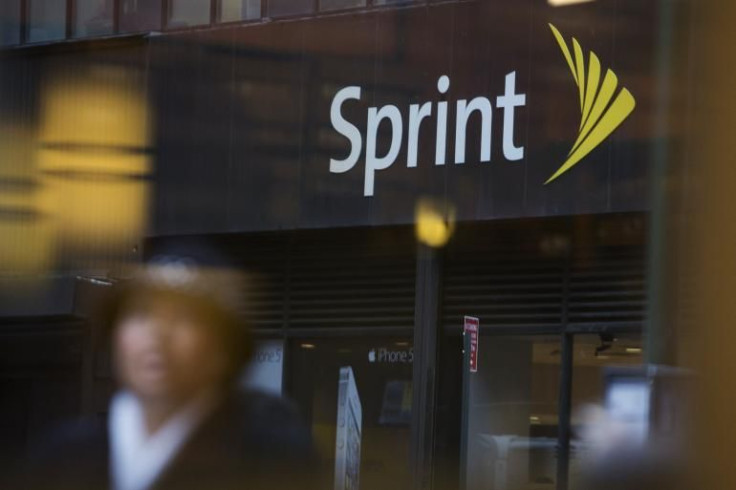Sprint Corp. (S) Earnings: What's A Name Worth? $1.9B Less As Carrier Writes Down Brand Value

Despite being in a fierce price war with them, Sprint Corp. wants to be more like the nation’s No. 1 and 2 networks, Verizon Communications and AT&T Inc., by gaining and retaining premium subscribers. Sprint said Thursday it added a net of 967,000 long-term wireless contracts in its fiscal third quarter, its biggest net gain in two and a half years. In comparison, Sprint added 590,000 contracts in its previous quarter and 682,000 in the year-prior one.
On the downside, Sprint, which was valued at $115 billion at the time of its proposed 1999 merger with MCI Worldcom, said in its quarterly report before markets opened Thursday that it had taken a $1.9 billion impairment charge on the value of its brand. The company’s market capitalization now stands at about $18.8 billion. Among other factors, Sprint's brand recognition took a hit with its decision, announced in December, to end sponsorship of NASCAR's top circuit.
While Sprint still holds third place among mobile networks, it gained more new subscribers in its last quarter than AT&T, which added 854,000 long-term wireless contracts. “We are becoming more aggressive competitors on all fronts, focusing on acquiring and retaining quality customers, improving our network and customer experience, and reducing costs,” said Sprint CEO Marcelo Claure in a statement.
Verizon and T-Mobile US Inc. each gained 2.1 million subscribers during their most recent quarters. Sprint claimed a total of 55.9 million connections on its network as of its fiscal third quarter.
The carrier also regained its status as the nation’s top provider of prepaid subscriptions, after T-Mobile claimed that position in August 2014. Sprint added a net of 410,000 prepaid customers, up from 88,000 subscribers from the year prior, largely due to growth in its Boost Mobile brand.
Sprint credits significant enhancements in its wireless network for its increase in subscribers. Research firm Nielsen said the network is now experiencing its lowest dropped-call rates ever, with better than 50 percent improvement year over year.
Deals and discounts have also helped the network attract customers. “We have repositioned Sprint by providing simple options that save customers money, with unlimited plans for individuals and family plans that allow customers to save money by sharing data,” Claure said.
Sprint has seen success with its “Cut Your Bill In Half” promotion, which urges AT&T and Verizon customers to try Sprint for a reduction of up to 50 percent in their monthly wireless fees. In addition to seeing a 10 percent increase in traffic to its brick-and-mortar stores in December, the network has found that many AT&T and Verizon customers inquiring about “Cut Your Bill In Half” opt for one of Sprint’s standard offerings instead, because of the value and flexibility in the plans.
“Sprint has taken its medicine,” said MoffettNathanson analyst Craig Moffett in a research report Thursday. “They have finally begun to get serious about lower prices. We have little doubt that their price-led strategy will work to slow subscriber losses. But there is a lot of heavy lifting to do when it comes to repricing the base.”
Sprint has also expanded its leasing programs, which started with “iPhone for Life,” to now include select Android devices such as the Samsung Galaxy S5 and Galaxy Note Edge and the LG G3. The network’s programs are attracting customers with three times the quality of those that joined Sprint in the year prior quarter, according Claure. Some of the highest-quality customers are multiline accounts, which have “lower churn characteristics” and lower support costs because they tend to call helplines less often. They also consume less data and combine more lines per bill.
Still, the rate of subscribers leaving Sprint remains higher than that of rival networks, with 205,000 subscribers lost in the fiscal third quarter. But Sprint is confident its rate of retained customers will increase in 2015, in particular in its current fourth quarter. The network plans to stem subscriber losses by further promoting its upgrade and multiline plans, which tend to deter customers from leaving. Additionally, Sprint is still experiencing customer loss due to old plans from the regime prior to Claure’s tenure, which the CEO expects will slow and stop in coming quarters.
Sprint reported a quarterly loss of $2.38 billion, or 60 cents per share, due to non-cash impairment costs having to do with “a $1.9 billion reduction to the Sprint trade name and approximately $200 million to reduce the carrying value of wire line network assets,” the company said in its earnings statement.
In comparison, Sprint posted a loss of $1.04 billion, or 26 cents per share, in the year-prior quarter. Revenue fell 2 percent to $8.97 billion. Analysts polled by Thomson Reuters had expected a loss of 24 cents per share and revenue of $8.68 billion.
Recent reports say Sprint has plans to purchase several RadioShack locations following the electronics store’s bankruptcy announcement in January. While Claure said he could not comment on the rumors, he did discuss Sprint’s need to increase its distribution. Sprint currently has the fewest brick-and-mortar stores of all the carriers: 500 to 600 less than T-Mobile and 3,000 less than Verizon, according to Claure. The network plans to increase its store count by at least 500 in 2015 and is looking at many different opportunities to boost its retail presence. “Distribution growth is one of the key imperatives needed to continue to attract customers to the Sprint brand,” Claure said.
© Copyright IBTimes 2024. All rights reserved.












